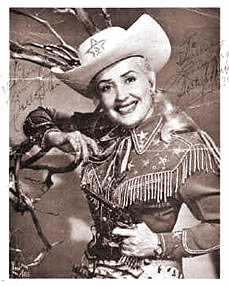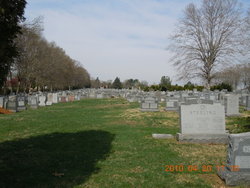I was in Rome just a few days ago. I was standing in the center of the Sistine Chapel facing The Last Judgment by Michelangelo where Jesus wears the face of
Apollo and Mary the face of Venus and all of the images conflate time and
space.
"The first surrealistic painting," our guide says. "Michelangelo was more Dali than Dali" and I find myself nodding in agreement as I spot St. Bartholomew holding his own flayed skin.
"The first surrealistic painting," our guide says. "Michelangelo was more Dali than Dali" and I find myself nodding in agreement as I spot St. Bartholomew holding his own flayed skin.
And while the distinctions between Heaven, Hell and
Purgatory are easy to discern, it is much more difficult to construct anything
resembling a linear narrative or chronological time. Thousands of tourists and pilgrims stand,
staring skyward in awe, as if Jesus himself is about to pass judgment on us
all as the uniformed security guards march among the crowds barking silenzio and breaking the silence.
On the way into the chapel itself is a long long corridor with a huge doomed ceiling covered with brightly covered panels of images depicting stories from the Bible. The stories are from the New Testament with renderings of scary things like the slaughter of the innocents, the stigmata, the crucifixion – image after image that scare me to death because after all, I am Jewish and my mother taught me I’d be beaten by the goyim if they ever caught me in one of their churches and that God would strike me dead if he heard me saying “Jesus Christ.”
I shudder and look down, but the colors draw my gaze back
and and I find that I am reading the world’s largest comic book with panel after panel of action and movement and story.
I blink and the text of the Gospel appears in dialogue bubbles.
I blink and the text of the Gospel appears in dialogue bubbles.
In room after room in this Vatican Museum, there are Roman columns, marble walls and gold magnificence and it is only then that the ruins scattered around this ancient city make any sense at all – the naked crumbling walls of the Colosseum, the remnants of columns from the government buildings where the famed Roman senate met in the Forum - all scarred by theft and pillage, their grandeur hauled away to the other side of town to Vatican City.
The next day, at the
Pantheon, a guide explains how this
majestic temple to all of the Roman gods was erected in such a way as to align with
the sun so that on June 21, the summer solstice and the longest day of the
year, the light of the sun could pass through the exact center of the dome’s
opening.
Two weeks before I had been on another trip, in another hemisphere, standing inside the remains of another temple
listening to a different guide speaking a different language explain how the windows of two of the scared
buildings at Machu Picchu had been designed to line up with precisely with the
sun, so that on December 21, the summer solstice and the longest day of the year in the souther hemisphere, the sun’s light would pass directly
through the windows and light up the center of the Temple of the Sun.
Machu Picchu in October, the
Pantheon in November.
Amazing. Me - someone who hadn’t made her first trip
abroad until she was well into her forties,
someone who as a girl could only have dreamed of visiting these places she was reading so much about.
I, Marsha Rosenzweig was standing in the center of sacred edifices in different
parts of the globe able to make connections across continent and culture.
Hurtling our bodies through time zones and hemispheres,
stepping onto strange soil, hearing languages we can’t comprehend, traveling
pulls us up from the roots and shakes us good. Time and space conflate as people, events
and images shake free from the shackles of their context and fly through our psyches like shooting stars or colliding atoms.
On the same trip to Peru where I leaned against walls of Inca temples made from precision cut interlocking stones, I visit the village of Patacancha high in the Andes. I am traveling with a group of American women writers and we are there to spend the day among Quechuan woman who will teach us how to weave. Outside under thatched awnings, in the rain, with their children close beside them, our young teachers show us how to spin and dye the yarn of the llama, make a loom out of sticks planted in the ground, wind the warp around the sticks and to weave the weft into colorful fabrics with intricate patterns.
As we are leaving, we stop by a clinic where the woman go to
have their babies. There is no doctor, only one nurse. Thought brightly painted and clean, it is a stark place
with bare walls and no modern technology.
It does not look like a place anyone would want to deliver a child. I snap pictures of the women and the clinic
on my cell phone before departing.
Later when I return to our hotel in Ollantaytambo where, of course, we have wifi, I see on that
very same phone a pictures of the ultrasounds that my expectant daughter and
daughter in law have sent me - my
grandchildren to be, growing inside of them.
I text my pregnant daughter and send her pictures of the women
I met today - young women who carry
their babies on their backs wrapped snuggly in handmade colorful aguayos. I also send the picture of the clinic.
If I lived here Tyler would have died, she texts. I might have died too.
I know she's right for in that instant I recall the dozens of people and the multitude of machinery that kept my daughter alive after her water broke at 31 weeks, causing an infection which necessitated an emergency Caesarian section where she delivered a tiny little boy who had to spend over a month in the neonatal intensive care unit.
I know she's right for in that instant I recall the dozens of people and the multitude of machinery that kept my daughter alive after her water broke at 31 weeks, causing an infection which necessitated an emergency Caesarian section where she delivered a tiny little boy who had to spend over a month in the neonatal intensive care unit.
On the trip to Peru, I brought a guest. I hadn’t planned on bringing one and I didn’t
even know she had stowed away with me until we arrived. She made her presence known in an unexpected way. It happened at the lodge in Pisac when I was talking with Page Lambert, a wonderful teacher and beautiful writer and the woman who'd organized the trip. Page is pretty with long blond hair and wears a cowgirl hat.

"Hey Page," I hear myself say giggling. "You look just like Sally Starr!"
"Who's Sally Starr?" Page asks a little cautiously, wondering if that is a good or bad thing.
"She's this television personality from my childhood who I idolized. She used to host a Popeye cartoon show after school. And she was beautiful, just like you."
"Damn," I said. "Can you believe that I'm in Peru with my gal Sal?"
And that’s how she showed herself – my younger self who almost fifty years ago had run to the library to find books about the Incas after reading about Machu Picchu in the yellow “Understanding Latin America” textbook and who devoured book after book of Greek and Roman myths.
So here’s the thing.
Travelling doesn’t just make new memories, it can transform old
ones. Now and forever more, that
girl in Mr. Rose’s 6th grade class in 1963, or the one a year later in 7th
grade studying Roman mythology… that
girl? The one who asks so many questions and wants to experience so many things?
Looking back at her childhood or forward to the day when her last judgement comes, she is not just be somebody who wants to visit Machu Picchu or the
Pantheon after knowing them only from books.
She is someone who will have been there.





























